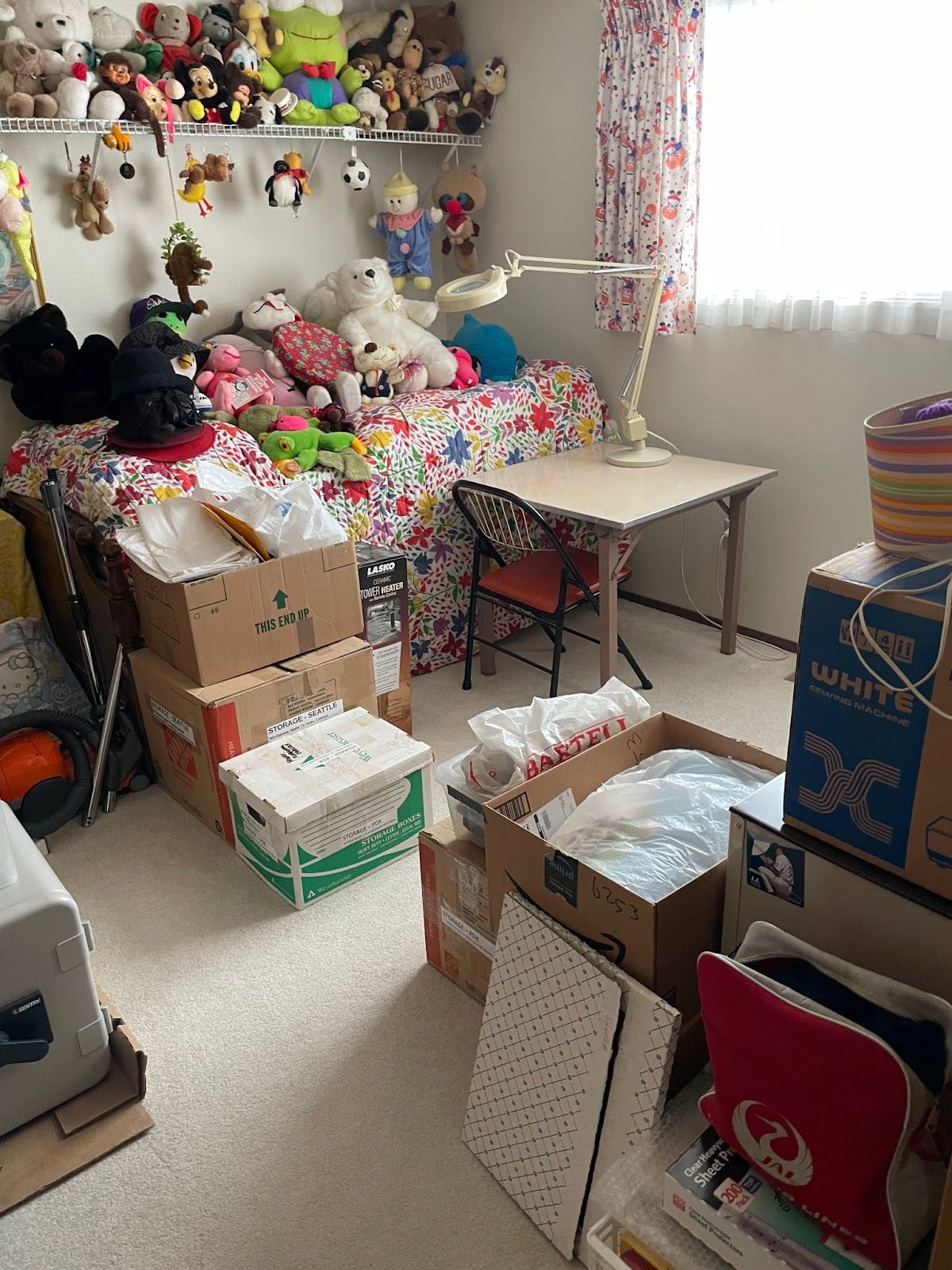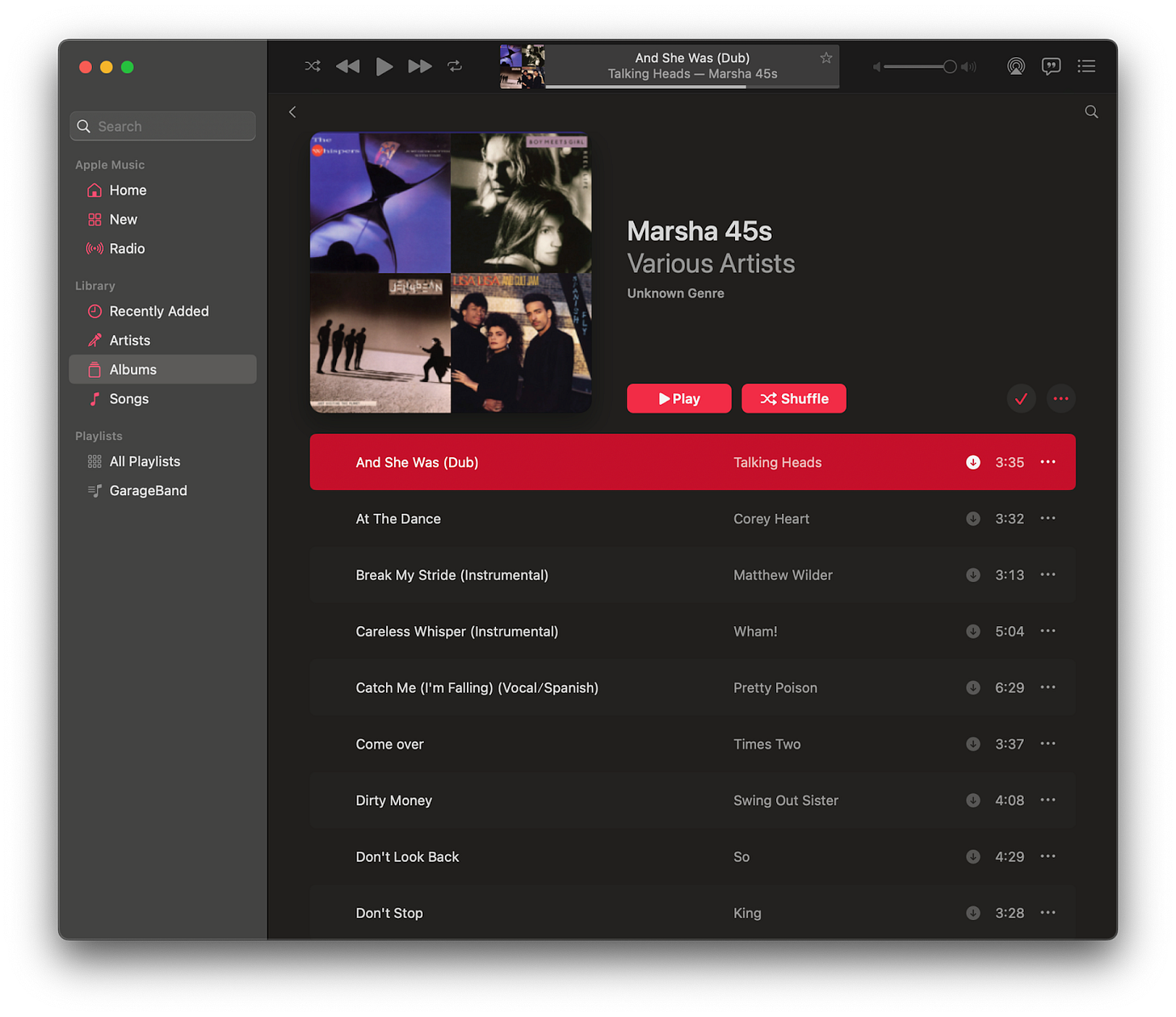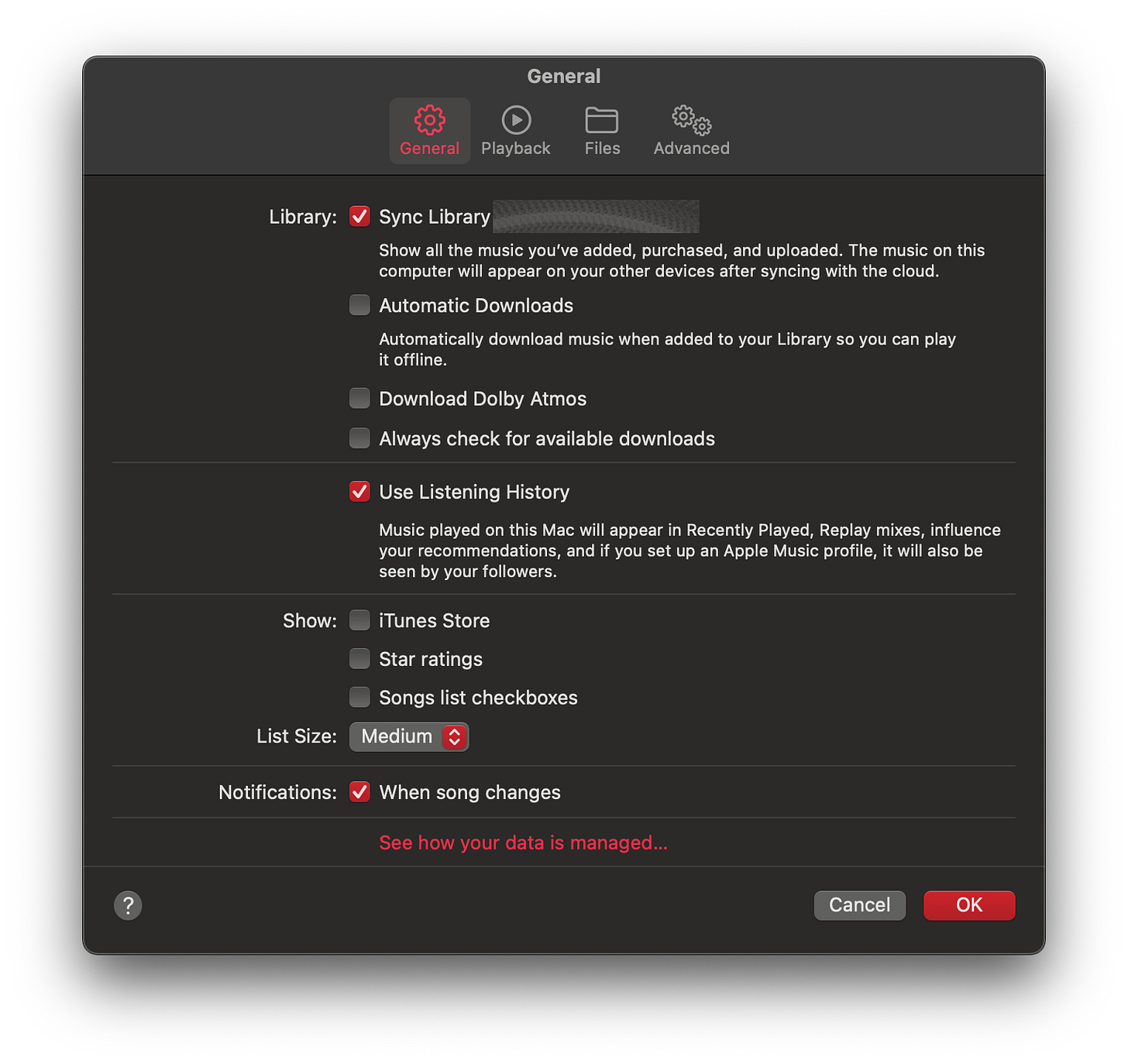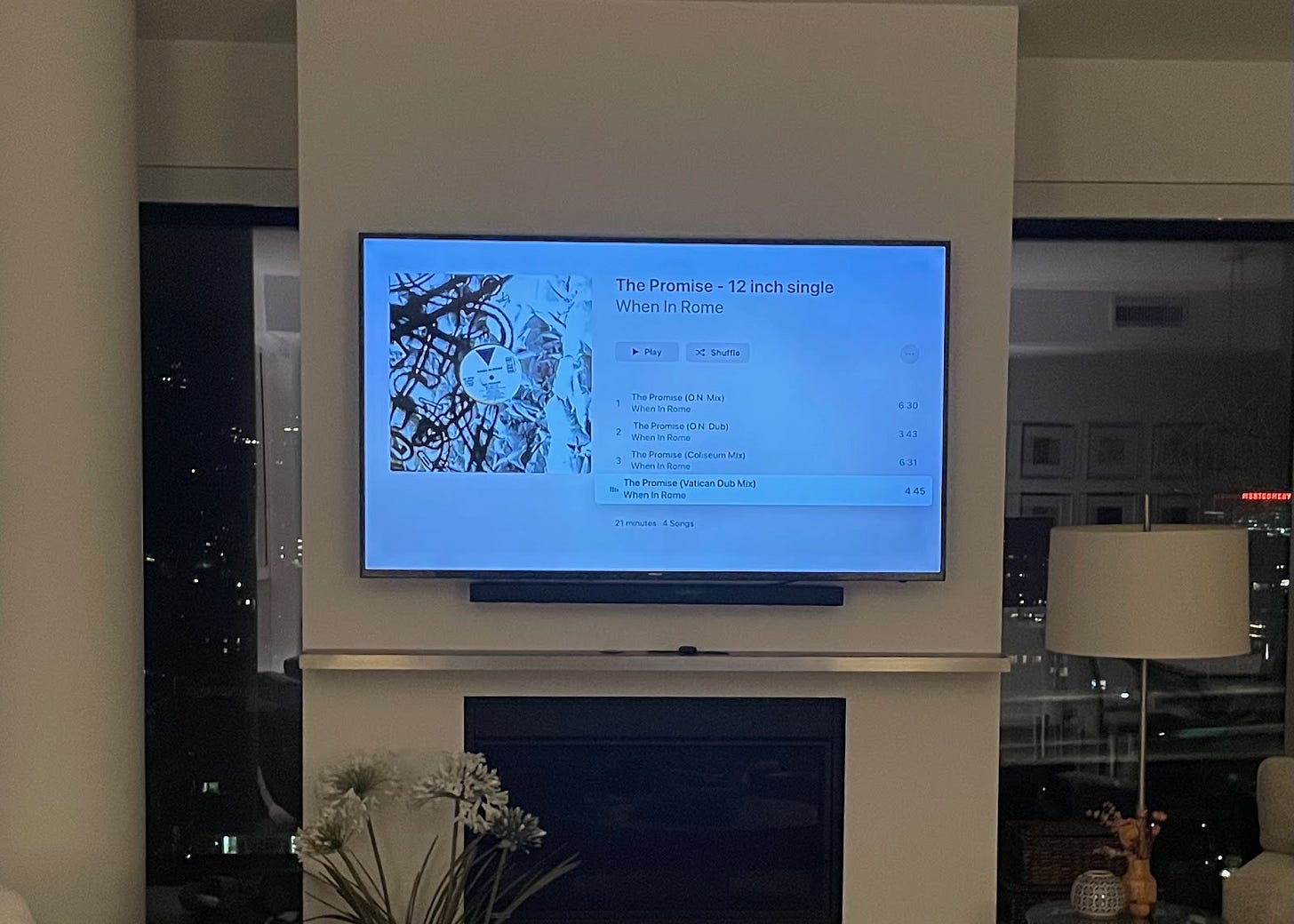Space-Time Continuum of Family Decluttering
When Two Projects Teach the Same Lessons
I'm writing this post Sunday night after Marsha and I returned from her family home. As I mentioned in my August 6th post, we decided to tackle this massive decluttering project room by room, starting with her childhood bedroom.
Unfortunately, we've now discovered what we're calling a "hole in the space-time continuum." No matter how much we clear from that room, more items seem to magically appear from the depths of closets, drawers, and boxes laid out on the floor. Marsha swears she had shredded all her personal letters and cards only to discover a nightstand drawer filled with such items.
Progress and Reality Checks
Despite the setback, Marsha made significant progress identifying items for Goodwill, Powell’s (our used book store), and Scrap Creative Reuse (our local non-profit crafting store). She unearthed an old photo album that we brought back to Portland, along with two large bags of garbage (not pictured below, thankfully). Still, even focused on just that one bedroom, she ran out of time.
The reality hit us. After she left home over 30 years ago, many of her belongings and other random objects that had been stored elsewhere in the house gradually migrated to her old room. Her mom also used the room as a home office, layering in years of crafting supplies. The result? An exploration spanning space-time (and memories!)
We're both amazed at how many items fit in that room. Marsha strategically avoided the myriad of stuffed animals lining the shelves and bed. They were already "out of the way," and she wisely started with closets, drawers, and floor space first. We clearly underestimated the scope of this job. She left the room in a somewhat non-functional state, but more organized and ready for her next attack.

My Parallel Project: Digitizing Decades of Vinyl
While Marsha sorted through physical memories spanning decades, I tackled her one decade of vinyl from the 80’s. While the timescales were different, this project taught me the exact same lesson about underestimating scope as well as undertaking projects that aren’t worth it.
Her vinyl collection consisted of 45s, albums, and 12-inch singles. The strategy was to first identify the music that was available on Spotify. For those tracks that were not available, I prepared myself with a recording set up to “rip” the vinyl and digitize them for storage and cataloging on my Mac, ultimately syncing to Apple Music.
My Ripping Setup
To connect the family turntable to my Mac, I used a Behringer UCA202. This little device accepts RCA cables with the PHONO signal and ground wire on one end and connects to the Mac via USB on the other. The built-in headphone jack let me monitor the recording process.
For recording software, I chose Audacity. The standout feature is its ability to analyze a full LP side recording and use silence detection to automatically split the recording into separate tracks, name the segments, and export individual song files.
Cataloging in Apple Music was smooth, as I had done this before when ripping CDs years ago. Here's what some of the ripped files looked like:
I synced my Mac to my cloud account, making the ripped songs available on all our Apple devices, including our Apple TV.
The Disappointment
Once digitized, it was easy to listen to the music using a combination of Spotify for songs already in the cloud and Apple Music for the songs I ripped. (The savvy reader will ask why we don’t just use Apple Music for everything. It’s because our adult children are heavy Spotify users, and they share their playlists with us.)
Assembling Spotify playlists for the majority of Marsha’s 45s collection was easy. The more popular songs in her collection were already on Spotify, so I created playlists for both the A-sides and B-sides of her 45s. We listened to these playlists on “shuffle play” on our drive home from Bellevue to Portland, with highlights including the Scorpions, the Go-Go’s, Madonna, and others. Suffice it to say, the playlists can be significantly pared down, and we're ready to say "goodbye" to many of these musical memories. In hindsight, we prefer the 80’s playlist assembled by our younger daughter on Spotify years ago that we curated off of memory.
For the songs that weren't available on Spotify, I spent hours "ripping" the missing tracks to my computer while Marsha was clearing out her bedroom. After listening to these ripped tracks recorded from the 45s, we realized that we can delete many of these songs from our Apple Music account. I wished I could have gone back in time and been more discerning upfront.
The Real Treasures (and the Real Challenge)
The true gems weren't in the 45s, as we’d already had the popular songs we liked in other 80’s Spotify playlists. For the same reason, I don’t expect to find much unique content in the vinyl albums, either. So far, the treasure appears to be in Marsha's collection of 12-inch singles. Many are pro-DJ quality pressings filled with remixes that simply don't exist on Spotify or Apple Music. (I'm listening to "The Promise (Vatican Dub Mix)" as I type this.)
Just as we mis-scoped Marsha's bedroom project, I completely miscalculated the vinyl digitization task. I didn’t forecast how worthless the 45s would turn out to be or how involved going through the 12-inch singles would be. A bit of research revealed that these 12-inch remixes involve multiple rights holders, making them generally absent from streaming platforms' bulk licensing deals.
Unlike CD ripping, which happens at speeds much faster than playback, vinyl recording must be done in real-time. Each 12-inch single can contain multiple mixes of the same song, making this an incredibly time-intensive process.
However, to avoid the problem we discovered with ripping the 45s, we still need to decide how many of these unique mixes from the 12-inch singles deserve the time investment to digitize. It's a quality-versus-quantity decision that mirrors what Marsha faces with every box in her childhood room.
The Parallel Lesson
We tackled two completely different projects this weekend, but we learned the same fundamental lesson: we're terrible at estimating the scope of sentimental sorting projects, and we probably put too much time, work, and energy into items that just aren't worth it.
Both projects require us to be more ruthless about what truly deserves to be kept. Whether it's childhood mementos or rare vinyl remixes, the question remains the same: does this item earn its place in our current life?
We'll head back to Bellevue to continue both projects. I'll have another opportunity with the family turntable, the vinyl digitization project continues. And Marsha will face that room again, perhaps with a better understanding of the “hole in the space-time continuum” she's working against.
This is my 103rd post on this Substack. I’m nearing my one-year anniversary of doing these (about) twice a week. I’ll do one last more post in this format to wrap up the year. For my second year, I’m going to change things up in four ways:
Change from semi-weekly to weekly format. I understand your inboxes get full!
Add a podcast format (Apple Podcasts, Spotify, YouTube) for more raw thoughts and for more passive absorption. I have heard the feedback that people don’t really read anymore but like scanning emails.
Use AI to produce scannable emails. I’ll use an AI notetaker to create show notes of these podcasts to distribute as an email newsletter. The intention is to make the emails more scannable than the current essay format.
Cover multiple smaller topics, rather than one central topic (like this and this). I found that the experimental posts I did with multiple smaller topics resulted in more engagement during conversations with friends throughout the week.
I’m looking forward to changing things up! Let me know how this goes!
In the meantime, please make sure that retiredpdx+b-sides@substack.com is in your Contacts list so my podcast emails don’t go in your Junk E-Mail folders. The emails for the podcast will be coming from that address. I will follow up with the Apple Podcasts, Spotify, and YouTube URLs once I post my first episode.







“While the timescales were different, this project taught me the exact same lesson about underestimating scope as well as undertaking projects that aren’t worth it.” This sentence hits hard!